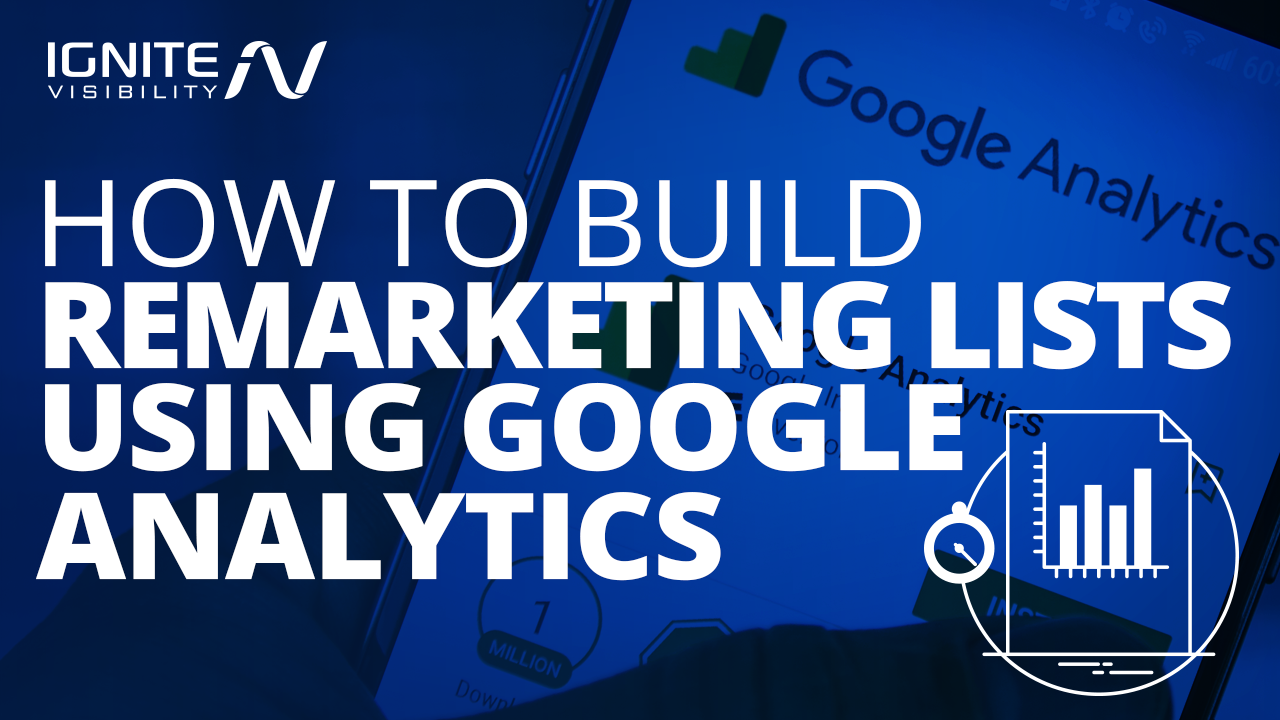Utilizing Remarketing in Google Analytics: A Comprehensive Overview
Taking advantage of remarketing in Google Analytics provides companies a strategic side in getting to out to possible customers. This overview will certainly lose light on the necessary steps entailed in utilizing the complete potential of remarketing in Google Analytics, leading to improved marketing outcomes.
Comprehending Remarketing in Google Analytics
Remarketing in Google Analytics permits companies to purposefully target users who have formerly engaged with their internet site or mobile application. By leveraging information from Google Analytics, businesses can create customized remarketing listings based upon user actions, such as pages visited, activities taken, or certain goals achieved. This effective device makes it possible for businesses to re-engage with customers that have shown interest in their items or solutions, inevitably increasing the chance of conversion.
Understanding the different sorts of remarketing strategies is critical for an effective campaign - What Is “Remarketing” In Google Analytics?. Google Analytics offers numerous alternatives, consisting of standard remarketing, vibrant remarketing, and remarketing checklists for search ads (RLSA) Each type offers an one-of-a-kind purpose and can be customized to fulfill details advertising purposes
Furthermore, evaluating the efficiency of remarketing projects is essential for maximizing outcomes. Google Analytics supplies important insights right into the efficiency of various remarketing methods, allowing companies to make data-driven decisions and fine-tune their targeting method. By constantly readjusting and keeping an eye on remarketing efforts based upon analytics data, companies can make best use of ROI and drive success in their advertising and marketing campaigns.
Establishing Remarketing Campaigns

After setting up target market listings, the next action is to link Google Analytics with Google Ads. By linking these 2 platforms, businesses can flawlessly move target market lists from Google Analytics to Google Advertisements for remarketing functions. This integration enables for even more accurate targeting and better project efficiency.
When the accounts are linked, organizations can create remarketing projects in Google Ads using the target market notes formerly defined in Google Analytics. These projects can be tailored with certain ad creatives, messaging, and bidding strategies to properly re-engage with past visitors and drive conversions. By complying with these actions, organizations can utilize the power of remarketing to boost their advertising initiatives and boost ROI.
Making Use Of Audience Division Methods

Predefined segments in Google Analytics permit you to promptly evaluate usual audience classifications fresh customers, returning individuals, or customers who finished a certain objective on your website. Personalized sectors, on the other hand, enable you to produce distinct segments based on particular standards that are very important to your organization objectives. Dynamic remarketing lists instantly adjust based on customer actions, showing personalized advertisements to individuals who have actually interacted with your website particularly ways.
Studying Remarketing Efficiency Metrics
Upon assessing the performance of remarketing campaigns in Google Analytics, the evaluation of key performance metrics offers important understandings into audience engagement and conversion rates. By delving into metrics such as click-through prices (CTR), conversion prices, expense per purchase (CPA), and return on ad invest (ROAS), online marketers can determine the success of their remarketing efforts. Analyzing these metrics enables marketers to enhance campaigns, refine audience targeting, and allocate budgets successfully to improve general remarketing efficiency.
Enhancing Remarketing Approaches
When refining remarketing strategies in Google Analytics, focusing on audience segmentation is extremely important for attaining campaign success. By splitting your target market right into specific segments based upon their actions, demographics, or interests, you can customize your ads better per group. This targeted strategy raises the likelihood of engaging customers who have already revealed rate of interest in your services or products, leading to greater conversion rates.
An additional vital element of optimizing remarketing approaches is constantly screening and refining your campaigns (What Is “Remarketing” In Google Analytics?). A/B testing various ad creatives, messaging, or deals can help you recognize what resonates best with your audience and drives the most conversions. By assessing the performance of these examinations in Google Analytics, you can make data-driven choices to enhance your remarketing efforts additionally
Moreover, leveraging vibrant remarketing can dramatically boost your campaign results. This function permits you to show individualized advertisements to individuals based upon their past communications with your web site, showcasing product and services they have actually previously watched. By supplying customized content his comment is here to users based on their interests and behaviors, dynamic remarketing can help boost interaction and drive conversions.
Conclusion
To conclude, taking advantage of remarketing in Google Analytics is a critical strategy to target customers that have actually previously involved with a site. By developing personalized target market checklists and using target market segmentation techniques, services can enhance remarketing advocate increased conversion prices. Analyzing performance metrics and constantly maximizing methods are critical for optimizing the efficiency of remarketing initiatives.
Google Analytics uses various alternatives, including standard remarketing, vibrant remarketing, and remarketing lists for search ads (RLSA)After establishing up audience lists, the next action is to connect Google Analytics with Google Advertisements. By connecting these two systems, businesses can flawlessly transfer audience lists from Google Analytics to Google Ads for remarketing objectives.As soon as the accounts are linked, companies can produce remarketing projects in Google Advertisements using the audience provides formerly defined you can look here in Google Analytics.When refining remarketing approaches in Google Analytics, focusing on target market division is paramount for attaining project success.